We answer the often-asked question: “Is natural gas renewable?” and give 8 reasons why it is non-renewable. Not even if you waited a million years!
8 Reasons Natural Gas (NG) is Not Renewable
- Most natural gas and oil formations date back between 10 (Cenozoic) and 180 (Mesozoic) million years ago.
- All so-called but a tiny portion of “natural gas” is made from geological deposits more than 10 million years old.
- There is no scientific way that anyone has devised to speed up the geological process in which natural gas is formed let alone renew it “geologically” more quickly.
- If you have heard that the collection of natural gas made by the anaerobic digestion of farm waste, or that same process in landfills, has made natural gas a renewable resource you were misinformed. Only the “renewable” natural gas (RNG) this process makes is renewable.
- Renewable resources are only considered if renewal takes place by natural regeneration within a generation. Examples are 1 to 2 years for most agricultural crops and for softwood timber 20 to 30 years.
- The renewal process has to actually occur for anything to be classed as renewable. For example, renewable forestry requires the logging company to continually replant their forests.
- None of the global natural gas companies (or oil or coal companies for that matter) makes any attempt to buy up forests or renew the resources they extract by non-mineral means such as planting new forests.
- Natural gas from below the ground might have the appearance of being renewable because the natural gas companies keep sending out more of it every year. We all keep on using it the suppliers renew their stocks, but no more is being made. When the stocks underground, built up over millions of years are gone, they are gone for good!
Natural gas is a FOSSIL FUEL. Learn how natural gas is supporting our world's growing demand for energy in a way that is reliable and sustainable.
Read on to find out more about natural gas:
On This Page
- Is Natural Gas Renewable Or Nonrenewable?
- What is natural gas?
- Is natural gas renewable or nonrenewable?
- Why is natural gas not renewable?
- How is natural gas produced?
- What is the difference between renewable and nonrenewable?
- What biofuel can be used as a renewable substitute for natural gas?
- What are the pros and cons of natural gas?
- Why are cities banning natural gas?
- Why is Renewable Energy Important?
Is Natural Gas Renewable Or Nonrenewable?
Developments in recent years that allow the production and collection of natural gas from farm waste and landfills (as “landfill gas”) have not in any sense of the word made mined natural gas which is extracted from mineral deposits a renewable resource.
Renewable natural gas (RNG) is one of the most cost-effective methods for reducing scope 1 emissions from, for example, burning coal. Renewable natural gas energy from the anaerobic digestion process in biogas plants makes it easy to take advantage of this low-carbon fuel.
RNG is used to fuel vehicles, operate a utility, or for other industrial or commercial energy needs.
Blending renewable gas with natural gas is the first step on our journey to lowering carbon emissions. This is one way to reduce the use of the fossil fuel known as “natural gas”, and to make the transition to a lower carbon emissions world.
Biomethane is the word used to describe a form of renewable natural gas (RNG) increasingly being made. Biomethane is produced via biogas upgrading at anaerobic digestion plants. It can also be used as a renewable fuel in gas engines. Increasing numbers of companies can provide both biogas upgrading and biogas engine technologies.

Biomethane Production
Biomethane is a sustainable fuel that is produced by equipment called “biogas upgraders”. These process plants remove the CO2 from biogas. Biomethane is produced from biogas that is derived from organic matter such as human waste/sewage, food waste, distillery waste, etc, or agricultural materials.
As the carbon in this material has been recently taken from the atmosphere and is part of the short-term carbon cycle biogas and biomethane are deemed to be renewable fuels.
Natural gas is a good example of a non renewable resource
Natural gas is certainly natural. It is a naturally occurring non-renewable hydrocarbon gaseous resource located below the earth’s crust.
Natural gas is sold as a fuel for energy and for users, it makes no difference what makes up nonrenewable natural gas. It always consists primarily of methane wherever you live. However, it may also contain other gases, including ethane, propane, butane, and minute amounts of carbon dioxide, hydrogen sulfide, and nitrogen. As long as it will not corrode the pipes and other equipment it is transported through the natural gas suppliers vary the specification to suit the availability of other gases they wish to add.
Green Gas
Biomethane, also known as “green gas”, is also augmented with small doses of fossil fuel in order to ensure that it always matches natural gas for its energy value. It is a well-known and well-proven source of clean energy.
It is witnessing increasing demand worldwide, especially in European countries, as it is one of the most cost-effective and eco-friendly replacements for natural gas and diesel.
Biomethane is close enough to the properties of conventional natural gas that it can be directly injected into the existing gas network, compressed in the form of CNG, or liquefied as Bio-LNG.
So it’s a strong substitute for use in hard-to-decarbonize sectors, such as heating and transport.
This effectively opens up a distinct route to a carbon-neutral gas market, outside of hydrogen, carbon capture and storage, and electrification.
What Natural Gas Is
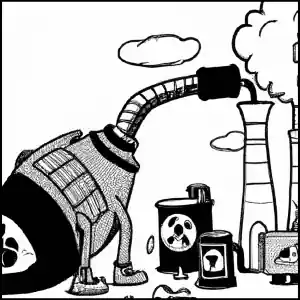 By contrast, natural gas is a non-renewable resource found underground. Produced by plants and animal material that has been compressed for millions of years. This combustible material is often used to produce electrical power. It may also be used as a heating source or as a raw material for products.
By contrast, natural gas is a non-renewable resource found underground. Produced by plants and animal material that has been compressed for millions of years. This combustible material is often used to produce electrical power. It may also be used as a heating source or as a raw material for products.
It takes millions of years for buried organic matter to form this type of energy. The geological process makes it impossible for it to be classified as a renewable source of energy. This is because the rate of its utilization is faster than the process of its formation.
Is Propane gas Renewable?
Propane is also nonrenewable in exactly the same way that applies to natural gas.
It is unlike renewable natural gas (RNG) that reduces greenhouse gas (GHG) emissions in two ways:
- first, by replacing fossil fuel with renewable energy, and
- second, by diverting organic waste that produces methane emissions in landfills.
Clean Energy
Renewable energy is often referred to as clean energy. It comes from natural sources or processes that are constantly replenished. For example, sunlight and wind keep shining and blowing, even if their availability depends on time and weather.
Methane is a better long-distance energy carrier than electricity. Its storage and transportation are much cheaper and easier than electricity.
Natural gas pipelines cost half as much to build as electric towers and have about one-fourth as much transmission loss. They are also more reliable, safer, and visually superior to ugly transmission towers.
Renewable Energy is Not a New Concept
While renewable energy is often thought of as a new technology, harnessing nature’s power has long been used for heating, transportation, lighting, and more. The wind has always powered boats to sail the seas and windmills to grind grain. The sun has provided warmth during the day and helped kindle fires to last into the evening. But over the past 500 years or so, humans increasingly turned to cheaper, dirtier energy sources, such as coal and fracked gas.
The term biomethane or bio natural gas refers to methane, which is of biogenic origin and a component of biogas. Biomethane is produced by processing raw biogas by means of CO2 separation and purification.
Biomethane processed in this way can be fed directly into the natural gas grid and enables the decoupling of the place of gas production from the place of utilization on the one hand, and the use of the gas network as a very large storage vessel and transport medium on the other.
The Latest Technology to Take the Spotlight
 In the search for alternatives to fossil fuel energy, renewable natural gas is the latest technology to take the spotlight. Renewable natural gas, also known as biogas, is collected from waste. Like natural gas, the main component of this power source is methane. Unlike natural gas, renewable natural gas does not require extraction from coal beds or petroleum reservoirs, which is the main source of commercial natural gas.
In the search for alternatives to fossil fuel energy, renewable natural gas is the latest technology to take the spotlight. Renewable natural gas, also known as biogas, is collected from waste. Like natural gas, the main component of this power source is methane. Unlike natural gas, renewable natural gas does not require extraction from coal beds or petroleum reservoirs, which is the main source of commercial natural gas.
Examples of Non-renewable Resources
Examples of non-renewable resources are:
- petroleum/crude oil
- coal and oil
- natural gas
- earth minerals: for example
- titanium
- gold
- iron ore.
Natural gas, like all fossil fuels, is a non-renewable source of energy formed in the earth over approximately the past 550 million years, typically from the remains of marine microorganisms and plants.
Over time, these organic remains decompose and become buried under more and more dirt, rock, and other decaying materials.
This process seals off oxygen and puts this organic matter under ever-increasing amounts of heat and pressure, leading to a thermal breakdown process that ultimately converts it to hydrocarbons.
Crude oil is a fossil fuel made up of organic elements like hydrocarbon deposits that occur spontaneously. It exists in liquid form in natural subterranean reservoirs. The majority of crude is used to create energy carriers such as gasoline, jet fuel, diesel, and heating oils.
Heavier oils are used to make wax, lubricants, paraffin, and tar. After harvesting, crude oil is transported to refineries, where it is processed into several types of petroleum products.
Biomethane is the methane gas that is formed from the fermentation of organic matter. It is also known as renewable natural gas or sustainable natural gas. It is a type of biogas having a quality that is similar to fossil natural gas. It contains about 90% methane or greater. Upgrading the quality of this gas allows the possibility to distribute the gas via existing gas grids within the existing appliances.
What is natural gas?
Natural gas is primarily methane (CH4), which has a higher energy content relative to other fuels, and thus, it has a relatively lower CO2-to-energy content.
Carbon Neutrality
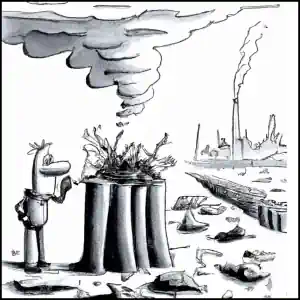 RNG is a critical transition stage energy source as we move to a clean energy future. Using it is the most effective way to decarbonize existing natural gas pipelines. Environmental impact: capturing methane and processing it to make rng significantly reduces greenhouse gas emissions and decreases reliance on fossil fuels. Revenue stream: selling rng into the natural gas grid delivers profits for owners of landfills, wastewater treatment plants, farmers, and food processors.
RNG is a critical transition stage energy source as we move to a clean energy future. Using it is the most effective way to decarbonize existing natural gas pipelines. Environmental impact: capturing methane and processing it to make rng significantly reduces greenhouse gas emissions and decreases reliance on fossil fuels. Revenue stream: selling rng into the natural gas grid delivers profits for owners of landfills, wastewater treatment plants, farmers, and food processors.
Converting biogas to RNG
Converting biogas, also referred to as biomethane, to RNG, the biogas is captured and purified. Treatment includes removing moisture, carbon dioxide, and trace-level contaminants such as siloxanes, volatile organic compounds (VOCs), and hydrogen sulfide.
Nitrogen and oxygen content are also reduced during this process. Once upgraded, the gas contains a methane content of 90% or greater. When rng is injected into a natural gas pipeline, it typically has a methane content between 96% and 98%.
Liquefied Natural Gas
Liquefied natural gas (LNG) is natural gas that has been reduced to a liquid state, through a process of cooling and pressurizing. It’s been part of the energy mix for many years, but it is a fossil fuel. It does have some potential to be used as a relatively clean replacement for diesel fuel as we move towards cleaner energy systems.
Monitoring the Quality of Natural Gas in the Gas Grid
Tunable diode laser absorption spectroscopy (TDLAS) technology detects and measures the concentration of molecular compounds (H2O, H2S, CO2) in gas streams. The rugged nature of the laser-based analyzers has allowed them to be used in natural gas pipelines with very little maintenance, no interference, and with no detrimental effects from glycol, methanol, amine, H2S, and moisture.
Biomethane is Now Cheaper than Natural Gas
Biomethane produced in Europe today is 30% cheaper than natural gas, the European Biogas Association (EBA) announced on 17 February 2022. On that day, the natural gas price stood at €80 per MWh compared to €18 a year previously.
Prices this winter were expected to remain at a similarly high level, but currently have risen much higher. While governments are struggling to reduce the impact of soaring energy prices on citizens’ energy bills, the EBA believes a solution is within reach by scaling up the production of biomethane.
Scaling Up RNG Production Could Significantly Reduce GHG Emissions
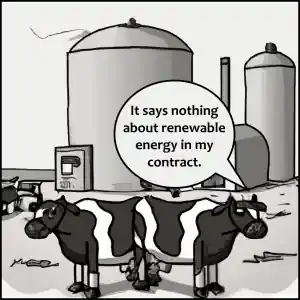 Increased production and utilization of RNG in North Carolina could significantly reduce greenhouse gas (GHG) emissions from the agricultural sector according to a biogas industry source, while also providing renewable energy for:
Increased production and utilization of RNG in North Carolina could significantly reduce greenhouse gas (GHG) emissions from the agricultural sector according to a biogas industry source, while also providing renewable energy for:
- industrial processes as well as
- the state’s electrical grid.
As North Carolina's number one industry, agriculture and agribusiness generate billions of dollars in revenue each year. At the same time, the agricultural industry also generates a substantial amount of animal byproducts, particularly organic waste streams, such as manure and swine waste.
This waste stream provides an enormous opportunity to produce biogas and renewable natural gas, or rng.
It is important to remember that RNG is not a fossil fuel
It’s low-carbon energy for homes and businesses.
The historical price spread between natural gas and diesel has created opportunities for vehicle fleets to significantly reduce operating costs over the life of the vehicle. Additionally, RNG isn’t subject to the fuel price volatility that imported petroleum products experience.
Additional financial incentives may be available in some countries. If so RNG can generate additional revenue for fleet operators through renewable identification number (RIN) and low carbon fuel standard (LCFS) credits, which are the “currency” of the federal renewable fuel standard (RFS) and California's LCFS programs, respectively.
Is Natural Gas Renewable or Nonrenewable?
 Natural resources are materials or things that people use from the environment.
Natural resources are materials or things that people use from the environment.
There are two types of natural resources. The first is renewable natural resources. They are called renewable because they can grow again or never run out.
The second is called nonrenewable natural resources. These are things that can run out or be used up. They usually come from the ground.
Biomethane When Made from Waste or Scraps
When biomethane derives from waste or scraps, it is a totally renewable fuel, which on one hand can guarantee an increase in the self-supply capacity of each individual state.
This reduces dependence on supplies from third countries, and on the other can ensure more competitive prices.
However, some forms of renewable energy like biomass are considered unsustainable due to the level of exploitation.
Carbon Dioxide Negative Fuel
Sometimes, RNG can qualify as a CO₂-negative fuel. One example is RNG obtained from landfills. Landfills tend to release methane, a potent greenhouse gas, due to naturally occurring fermentation. Recovering that methane and using it as a fuel prevents it from being released into the atmosphere. This means that the use of that fuel results in a reduction of greenhouse gas emissions.
In Germany, successful biomethane injection to the grid is possible thanks to the fact that clear regulations have been included in the gas network access ordinance. Technical regulations concerning the quality properties of biomethane and natural gas are provided in worksheets g 260 and g 262 published by the German Technical and Scientific Association for gas and water (DVGW)—a standardization body for the gas and water industry.
The basic requirements for the quality of gas from renewable sources are given in the worksheet g 262. If the gas is to be fed into the public gas grid, it needs to meet the regulations of DVGW worksheet g 260.
Questionable Viability of the Continued Use of Natural Gas
The pursuit of future energy systems that can meet electricity demands while supporting the attainment of societal environmental goals, including mitigating climate change and reducing pollution in the air, has led to questions regarding the viability of the continued use of natural gas.
Natural gas use, particularly for electricity generation, has increased in recent years due to enhanced resource availability from non-traditional reserves. It has been further used as a result of pressure to reduce greenhouse gasses (GHG) from higher-emitting sources, including coal generation.
While lower than coal emissions, current natural gas power generation strategies primarily utilize combustion with higher emissions of GHG and criteria pollutants than other low-carbon generation options, including renewable resources.
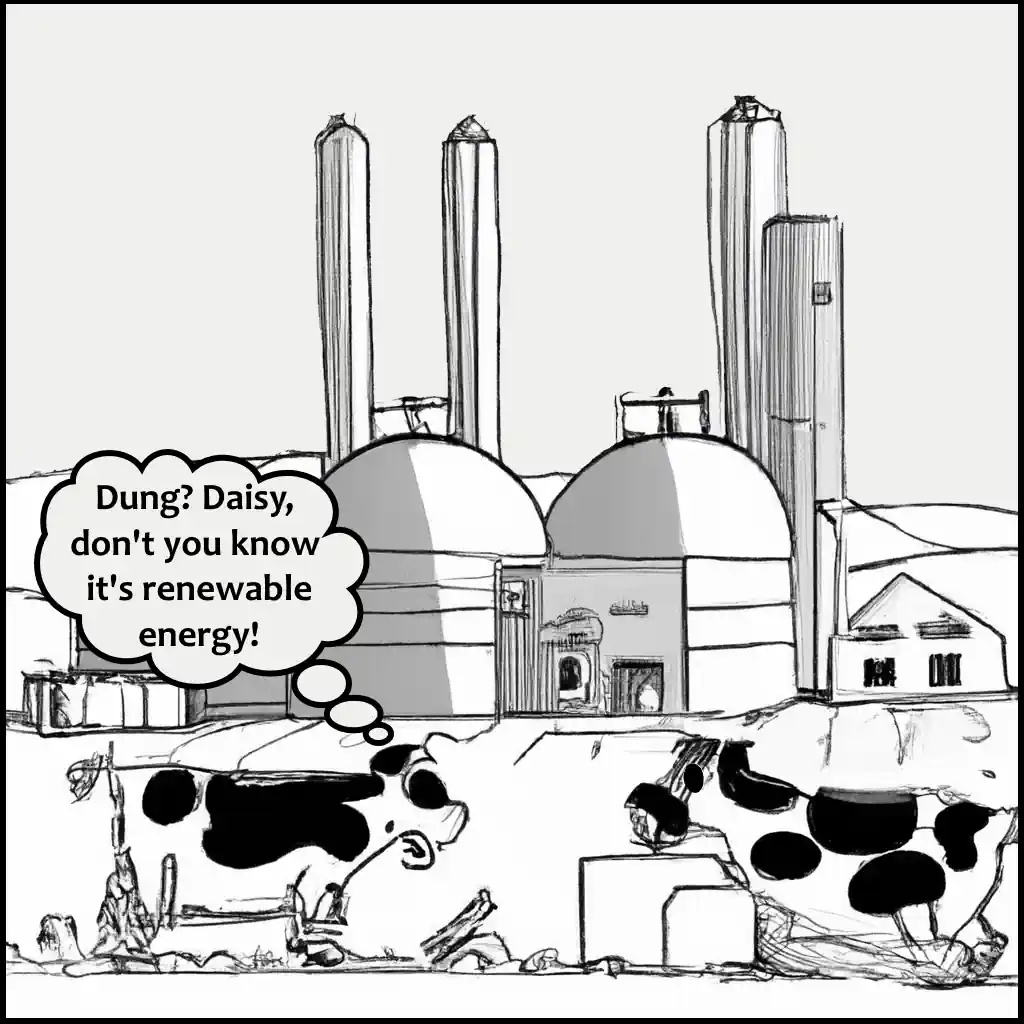
Why is natural gas not renewable?
The US federal government, some states, and the energy industry are increasingly looking to renewable natural gas (RNG) as an alternative to regular fossil-fuel-based natural gas in the power generation and transportation sectors.
However, there are challenges to overcome, such as the availability of the resource, and even environmental opposition.
The United States generates most of its energy through the burning of fossil fuels. Not only are fossil fuels a non-renewable resource. But they pollute the environment and contribute to climate change. It is important that the U. S. Becomes less reliant on fossil fuels and begins to use primarily renewable energy sources.
US Government Support for Renewable Natural Gas
A bill required the public utility's commission to adopt by rule, no later than 2021, renewable natural gas programs for large natural gas utilities.
Biomethane is the purified form of raw biogas and can be used as a natural gas substitute. It is also one of the main renewable gases of the future and is available today to decarbonize at least part of the EU's energy system.
The Repower EU Plan
As part of its RepowerEU plan, the European Commission presented last may the biomethane action plan, including the setup of the biomethane industrial partnership. Since then, the biomethane value chain has been working in cooperation with the European Commission on the implementation of the biomethane industrial partnership to make sure Europe can reach the announced EU target for biomethane production.
These resources are found beneath the earth’s surface and cannot be used sustainably. They are extracted in solid, gaseous, or liquid form and used to generate energy.
Unlike renewable resources, nonrenewable substances take longer than one’s lifespan to get replaced or replenished. Hence, it is prudent to control the usage of these finite resources, as they might not be available once they get exhausted.
Over the last two years since 2020, RNG has attracted significant capital; both the number of production facilities and the volume of gas produced has increased.
RNG is a relatively low-cost gas now that Putin has succeeded in creating a global shortage. Typically NG prices are well above even the higher renewable natural gas prices seen in recent months. However, environmental credits earned from rng production may substantially exceed the market value of the gas; one CEO characterized the effect of credits on project economics as “it's like magic”.
Natural gas is formed by decaying organic matter that has been buried and then subjected to intense heat and pressure. This means that it needs to be buried quite deep into the earth's crust, requiring either millions of years of sediment piling on top of it or geological processes to bury it. Natural gas is normally found alongside fossil fuels because humans are using them up at a much faster rate than they can be produced both natural gas and fossil fuels are non-renewable.
Energy Company EDL Joins in to Produce More Biomethane
Edl is investing in work that goes beyond the conversion of gas to electricity, and upgrading LFG to biomethane or renewable natural gas (RNG). Rng is biogas formed by the decomposition of organic matter, such as methane, that has been processed to pipeline-quality standards. It’s fully interchangeable with conventional natural gas and can be used in natural gas-fuelled industries and vehicles as compressed natural gas (CNG) or liquified natural gas (LNG). When used as a vehicle fuel, RNG provides a substantial environmental benefit that amounts to:
- an 85% reduction in CO2 emissions relative to diesel fuel.
Unfortunately, fossil fuels are nonrenewable resources created over the course of millions of years, far beneath the earth’s surface. When these finite resources are gone, they’re gone. The rate at which we’re using fossil fuels is too fast. If we don’t make a drastic and immediate change in how we’re using them, they could be potentially depleted within our children’s lifetime. On the other hand, renewable energy comes from virtually inexhaustible sources. Using these natural resources allows us to conserve and extend the lifespan of our nonrenewables.
The utilization of biomethane as a source of energy is a crucial step toward a sustainable energy supply. Biomethane is more flexible in its application than other renewable sources of energy. Its ability to be injected directly into the existing natural gas grid allows for energy-efficient and cost-effective transport. This allows gas grid operators to enable consumers to make an easy transition to a renewable source of gas. The diverse, flexible spectrum of applications in the areas of electricity generation, heat provision, and mobility creates a broad base of potential customers.
How is natural gas produced?
Natural gas is produced by drilling into natural geological reservoirs of natural gas which are found trapped beneath certain formations of gas-impermeable strata. These may contain oil as well as raw natural gas.
Like other fossil fuels, natural gas creates greenhouse gas emissions and contributes to air pollution. However, natural gas produces lower emissions—and less air pollution—than coal or oil. For instance, in 2021 natural gas also generated 32% of our energy and accounted for 34% of total carbon emissions. Coal on the other hand generated 12% of energy but produced 21% of our carbon emissions. While we are reducing our coal use, we must be careful not to replace those emissions by using more natural gas.
Natural gas is burned to generate an increasing share of U. S. energy. Electricity now supplies one-third of the country’s energy consumption. It is most commonly used to produce heat or electricity for buildings or industrial processes. In 2020, the united states produced about 24 percent and consumed about 22 percent of the world’s natural gas.
As it was formed, natural gas was trapped in underground rocks much like a sponge traps water in pockets. The type of rock that natural gas gets trapped in is called sedimentary rock.
To get natural gas today, humans must first find a pocket of natural gas deep below the earth’s surface and then drill a well into the pocket. Some wells are over a mile deep!
Once the well is dug, natural gas is piped from the well to machines that clean it and remove any water. Because natural gas can easily explode, an odor like that of rotten eggs is added to the gas so that leaks can be detected.
Natural Gas the Cleanest Fossil Fuel
Natural gas is the cleanest fossil fuel—and is considered by many to be a key ingredient as the world transitions to a cleaner future. The U. S. Energy information administration notes that most of the natural gas consumed in the united states is produced domestically.
Renewable natural gas can be produced and distributed via the existing gas grid, making it an attractive means of supplying existing premises with renewable heat and renewable gas energy, while requiring no extra capital outlay of the customer.
Though renewable gas has many advantages compared to conventional natural gas, it will likely take quite some time before renewable gas poses any threat to conventional natural gas producers.
For now, solar and wind are still the biggest renewable threats to natural gas in the power market as the market rallies around both to meet renewable and low-carbon goals. Btu’s power view service is your one-stop-shop for in-depth analysis of power development throughout the U. S.
Where does natural gas come from?
Natural gas is a fossil energy source that formed deep beneath the earth's surface. Natural gas contains many different compounds. The largest component of natural gas is methane, a compound with one carbon atom and four hydrogen atoms (CH4). Natural gas also contains smaller amounts of natural gas liquids (NGLs), which are also hydrocarbon gas liquids ), and nonhydrocarbon gases, such as carbon dioxide and water vapor. We use natural gas as a fuel and to make materials and chemicals.
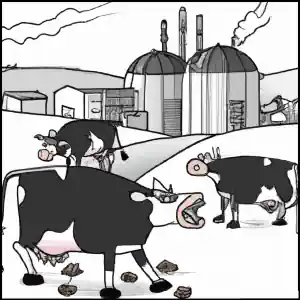 Green crude oil. Photo credit: sapphire energy. We've been taught that fossil fuels, like oil and natural gas, formed hundreds of millions of years ago. Prehistoric animals that once roamed the earth died. From the buried remains of these animals as well as plants, a natural decomposition process took place that required eons of time, intense heat, and a lot of pressure. This prehistoric process formed the fuels we now use today to run our modern economy.
Green crude oil. Photo credit: sapphire energy. We've been taught that fossil fuels, like oil and natural gas, formed hundreds of millions of years ago. Prehistoric animals that once roamed the earth died. From the buried remains of these animals as well as plants, a natural decomposition process took place that required eons of time, intense heat, and a lot of pressure. This prehistoric process formed the fuels we now use today to run our modern economy.
Fossil fuels, like oil and natural gas, were formed hundreds of millions of years ago. Prehistoric animals that once roamed the earth died. From the buried remains of these animals as well as plants, a natural decomposition process took place that required eons of time, intense heat, and a lot of pressure. This prehistoric process formed the fuels we now use today to run global economic development over the past century.
Gas is often presented as a promising candidate to deliver cleaner air and decarbonization, which are reasons why many outlooks see a continued need for gas to 2040 and beyond, even assuming a rapid energy transition. Others see it as a temporary and expensive solution that we, as a world, must not lock in, lest we undermine our efforts on deep decarbonization. And others still question whether gas should play any role at all in the energy transition, its environmental credentials undercut by fugitive emissions, venting and flaring, and the fact that it is still a carbon-emitting energy source.
Natural gas is a fossil fuel, though the global warming emissions from its combustion are much lower than those from coal or oil. Natural gas emits 50 to 60 percent less carbon dioxide (CO2) when combusted in a new, efficient natural gas power plant compared with emissions from a typical new coal plant. Considering only tailpipe emissions, natural gas also emits 15 to 20 percent less heat-trapping gases than gasoline when burned in today’s typical vehicle.
Fossil fuels—including coal, oil, and natural gas—are sources of energy that humans have taken advantage of over thousands of years. About 90 percent of the world’s energy consumption comes from fossil fuels. These were created by the decomposition of primitive organisms, buried in sand and mud, and compressed under the weight of accumulating layers. Over millions of years, temperatures and pressures changed the organic matter into coal, oil, and gas. Deposits of these resources are now found below ground in many areas of the world.
What is the difference between renewable and nonrenewable?
Renewable and nonrenewable resources are energy sources that human society uses to function on a daily basis. The difference between these two types of resources is that renewable resources can naturally replenish themselves while nonrenewable resources cannot. This means that nonrenewable resources are limited in supply and cannot be used sustainably.
What biofuel can be used as a renewable substitute for natural gas?
Renewable natural gas (biomethane) is pipeline-quality or transportation fuel-quality biogas and biofuel. It can be used as a renewable substitute for natural gas. RNG is primarily methane captured off landfills, farm digesters, and wastewater treatment plants. RNG is produced from non-fossil, organic waste sources and is 100% compatible with geologic natural gas – as a drop-in blend or complete substitute. On a lifecycle basis, rng yields a 70-130% emission reduction as compared to diesel.
Renewable natural gas is uniquely positioned to provide a meaningful contribution to decarbonization today and in the future due to its dual benefits. Renewable natural gas not only can serve as a substitute for conventional fossil fuels but can also offset emissions from other sources, such as landfills and livestock operations. Methane that would normally be released into the atmosphere at these locations is instead captured leading to an even greater carbon reduction.
What are the pros and cons of natural gas?
There are renewable sources of energy and non-renewable sources of energy.
A renewable source of energy comes from anything that can be replenished or renewed quickly. Non-renewable energy, on the other hand, cannot be reused or replaced as easily.
The disadvantage of “renewable natural gas” is that it is so easy to use the concept as a spurious PR branding by fossil fuel companies anxious to give their business models a green veneer.
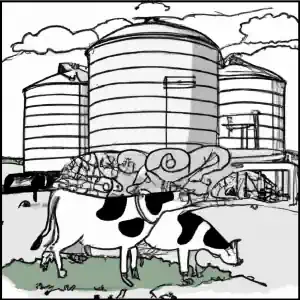 Paying lip service to the notion of producing RNG in quantities to rival fossil fuel NG may be a way for the nonrenewable energy industry to stave off regulations that would significantly cut back on gas consumption.
Paying lip service to the notion of producing RNG in quantities to rival fossil fuel NG may be a way for the nonrenewable energy industry to stave off regulations that would significantly cut back on gas consumption.
To promote the concept, these companies are now finding that RNG is not now as expensive as traditional fossil-produced gas. Its availability is limited compared to overall gas demand, but rapidly growing so its role in addressing global warming will be significant.
It’s proven – biomethane is already being injected into the gas infrastructure across Europe, GB, and NI. Plus, it has been proven to work safely and effectively without any impact on consumers. There is no consumer disruption – as biomethane can blend with natural gas there is no need for change to consumer appliances or energy behavior.
Although natural gas is a fossil fuel like the previously mentioned coal and oil, the advantage that it has over the other fossil fuels is the amount of useful energy it can produce. It is said that about 90% of useful energy can be produced and delivered to consumers. However, just like other fossil fuels, it is also a non-renewable energy resource. It is estimated that current reserves of natural gas will last for no more than 35 years.
Natural gas has many qualities that make it an efficient, relatively clean burning, and economical energy source. However, the production and use of natural gas have some environmental and safety issues to consider.
Why are cities banning natural gas?
California is home to 8 of the top 10 most polluted cities in the united states, where air quality fails to meet the federally mandated standards for healthy air. Asthma, heart disease and respiratory illness are just a few of the negative impacts of living with unhealthy air. Our economy depends on the trucking industry, but our health depends on clean air. Fortunately, we can achieve clean air quickly and affordably with the use of near-zero emission natural gas medium- and heavy-duty vehicles.
We offer customized roadmaps for cities to turn biogas into valuable renewable natural gas (rng):
identify potentially viable projects.
Why is Renewable Energy Important?
All fossil fuels are nonrenewable resources. It took millions of years to form fossil fuels and we are currently using them up faster than it is being made. Another challenge to using nonrenewable energy sources is that they can cause pollution.
Burning fossil fuels releases chemicals into the air and water. Reducing our dependence on fossil fuels is important, so governments are working hard to encourage scientists and industries to find new sources of energy and to improve alternatives.
The EU's a covid-19 recovery plan, emphasizes a clean energy transition. The European Commission has released a communication to other EU institutions detailing the strategy for EU economic recovery post-covid 19 (com(2020) 456).
Renewable energy is an increasingly important part of California's clean energy future and you can be a part of it. Your business may be able to reduce its carbon footprint, save money or generate revenue with renewable biogas and biomethane.
The biomethane sector will deliver 20% of current EU gas imports from Russia by 2030, the European Commission has announced. The commission’s RepowerEU plan, released on 8 March 2022, marks a decisive step towards the rapid development of Europe's biomethane industry.
In its statement, the commission said that to boost EU production of biomethane, the RepowerEU plan would aim for 35 billion cubic metres (BCM) of biomethane production by 2030, doubling the current EU ambition, while using sustainable biomass sources such as agricultural wastes and residues.




